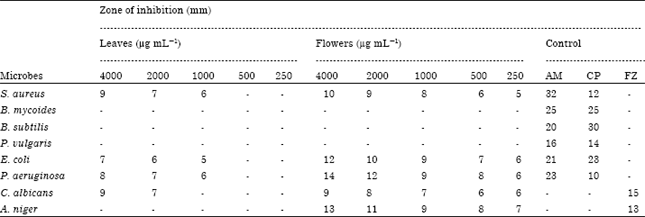Short Communication
Antimicrobial Evaluation of Buddleja asiatica Lour. Leaves and Flowers Extract
Department of Chemistry, D.S.B. Campus, Kumaun University, Nainital-263002, India
Devendra Mishra
Department of Applied Chemistry, Birla Institute of Applied Sciences, Bhimtal, Nainital, India
K.S. Khetwal
Department of Chemistry, D.S.B. Campus, Kumaun University, Nainital-263002, India
Ganga Bisht
Department of Chemistry, D.S.B. Campus, Kumaun University, Nainital-263002, India









